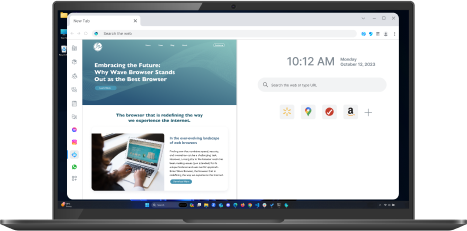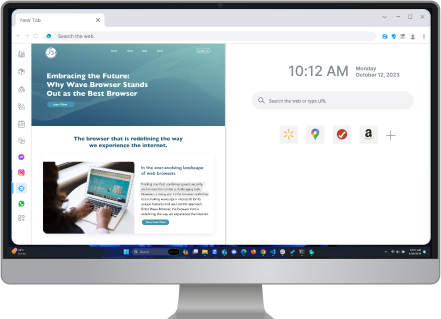Internet Safety Tips for Kids You Should Know Today
Table of Contents

The internet plays a big role in kids' lives today—whether they're chatting with friends on social media or playing games online. It's a great place to learn, explore, and have fun. But it also comes with some risks. That's why it's so important for parents and guardians to stay alert and involved.
Online safety helps protect kids from dangers like cyberbullying, oversharing personal information, or talking to strangers. By learning and following simple internet safety tips for kids, you can teach your children how to make smart choices online. Remember: a safer internet starts with smart, safe habits!
Essential Internet Safety Tips for Kids
Teaching internet safety to kids is a must, not an option. The online world is changing fast, and new dangers keep appearing. Kids need to learn how to protect themselves when they are online.
Start by having open talks about what they do on the internet. Teach children about the risks they may face online and show them how to handle these dangers. With the right support, kids can develop safe habits and use the internet in a secure way.
1. Educate about personal information boundaries
Children need to know how important it is to protect their personal information online. This includes private details such as:
- Their full name,
- Home address,
- School name,
- Telephone number,
- Email address.
Explain that sharing this information on social media, online games, or with strangers can bring serious dangers like identity theft or cyber bullying.
Parents also should talk about why having rules is important!
For instance, they can compare personal details to a key to your home. Just as someone could enter your house with a key, sharing certain information online can let strangers into your child's life. This comparison helps kids understand why they must be careful.
Teaching internet safety tips for kids is essential as they begin exploring the digital world. Parents should emphasize practical habits, such as using screen names instead of real names and being cautious when filling out forms on websites. Children should always ask a trusted adult for permission before sharing any personal information online.
By instilling these safety tips early, kids can enjoy the internet responsibly and stay protected from potential risks.
2. Recognize and avoid cyberbullying
Cyberbullying can happen through hurtful comments, false information, or by leaving someone out of social media groups and is one of the biggest online threats today. Kids need to learn how to recognize the signs of online bullying and deal with it confidently.
- Teach children that bullying is never okay and that they should tell a trusted adult right away.
- Encourage kids to keep records of online bullying by taking screenshots or saving messages.
- Emphasize that they should not get back at others, as this usually makes things worse.
Parents should tell kids that asking for help is brave, not weak. Talk about places where cyberbullying might happen, like online games, social networking sites, or chat rooms. By keeping an open conversation, children will feel stronger to handle these situations and protect their feelings against online issues.
3. Understand the risks of online strangers
Interacting with strangers online can be risky. Kids must understand the dangers involved with strangers, whether they are in chat rooms, social networks, or gaming communities.
Internet safety tips for kids are essential for helping children navigate the online world with confidence and caution. Parents should teach practical habits early on, like using screen names instead of real names and being careful when filling out online forms. Kids should always ask a trusted adult for permission before sharing any personal information.
Let kids know that not everyone online is who they say they are. Encourage them to block or report users who seem suspicious and to ask their guardians when they are not sure. When children understand these risks and take safety steps, they can feel more secure when engaging with the online community.
4. Use secure and kid-friendly browsers
Creating a safe place for kids to browse the internet is very important. Kid-friendly browsers help protect them from online dangers. They filter out bad content and limit access to unsafe websites. These browsers also encourage good online habits.
Apps like KidzSearch and browsers like Kiddle are designed for children and focus on internet safety. These tools come with parental controls that block harmful websites. Parents should set up these browsers and adjust their settings to fit their child’s age and needs.
It's also wise to check on children's browsing habits from time to time. Educate them about how to recognize safe websites. Teach them to look for “https://” in a web address and to avoid questionable pop-ups. By building safe online habits and using the right tools, kids can explore the internet with confidence and safety.
5. Set up parental controls effectively
Parental controls are important for keeping children safe online. Many platforms, devices, and apps have settings that let you block inappropriate content or limit screen time. This helps create a safer digital space.
Parents can also put kid-friendly apps on their devices to watch over what kids do online. For example, many tablets let parents create restricted profiles. This means they can filter content and limit apps. You can choose third-party apps to adjust these settings even more.
Using parental controls regularly helps kids learn to be independent while staying safe online. Parents should talk with their children often about why these controls matter. By clearly explaining these measures, kids will understand why they are important. This makes it easier for them to appreciate being safe online. With good tools and open communication, it is easier to create a secure digital world for kids.
Frequently Asked Questions

What age should children start learning about internet safety?
Children should begin learning about internet safety as soon as they start using digital devices—typically around age five or six. Trusted adults, like parents, teachers, and caregivers, play a key role in guiding them. There are also many U.S.-based organizations and educational resources that offer age-appropriate ways to teach kids how to stay safe online.
How can I monitor my child's internet usage without invading their privacy?
To keep trust and security balanced, use apps or tablets that have parental monitoring tools. Set up filters for content and limits for screen time. At the same time, keep communication open. Let your child know this monitoring is for their safety. This way, you can ensure everyone understands and trusts each other for better online safety.
Surf with Ease, Speed, and Security!

Download Wave Browser for a seamless online experience like never before. Try it now!


























